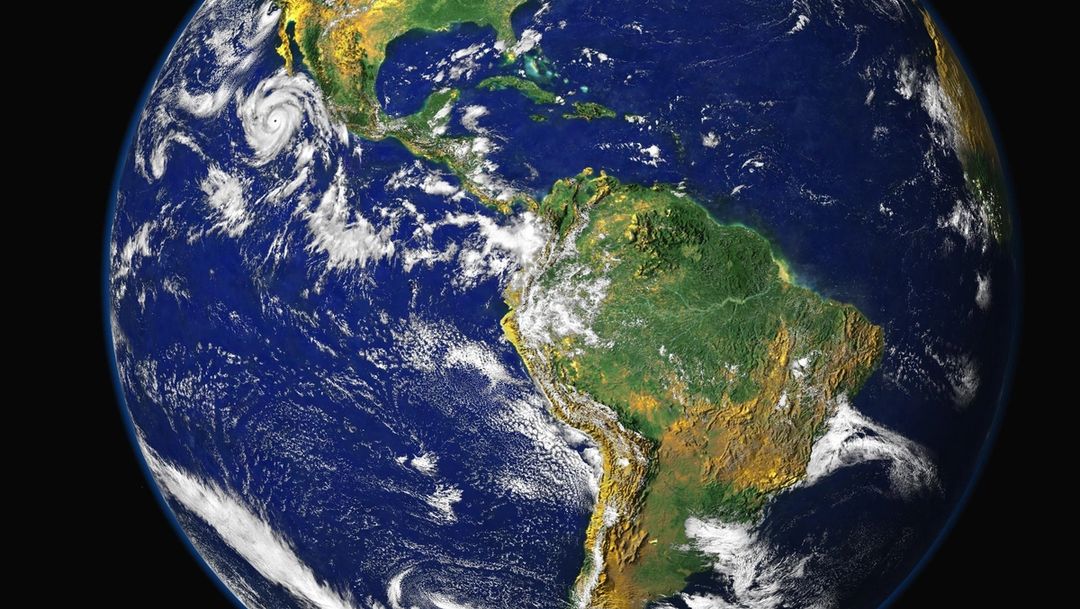The History Of Earth Day

Written by: Clare Cogan, Customer Experience @blueland
March 31, 2020
This year is the 50th anniversary of Earth Day! Earth Day and Earth Month allow us all to take a step back and think about our planet and how to best care of it. As we look ahead to the next 50 years of celebrating Earth, we wanted to look back at how the first Earth Day came to be.
How Did Earth Day Start?
The first Earth Day was observed on April 22nd, 1970 by 20 million Americans. Across the country, people participated in teach-ins, rallies and local clean-up events. Earth Day emerged on the heels of the Civil Rights movement and the Anti-War movements of the 1960’s and 1970’s, and channeled energy from activism. The first Earth Day was a nation-wide teach-in centered on college campuses across the country spearheaded by then Wisconsin Senator, Gaylord Nelson. After a few pivotal events in the 1960’s, Nelson felt inclined and empowered to draw attention to growing environmental concerns.

Earth Day 1970, Union Square NYC (AP)
What Inspired The First Earth Day?
Earth Day came about amidst growing concern for the environment. Car travel was increasing with the construction of the interstate highway system, which led to air pollution from car exhaust and gasoline and the dangers of chemicals on the environment were coming into focus. While there wasn’t one particular incident that led to the first Earth Day, three events are commonly cited as major sources of inspiration.
- Publication and Popularity of Silent Spring: In 1962 Rachel Carson published Silent Spring, exposing the dangers of pesticides and the impacts of pesticide use on the natural environment. The book was commercially successful and wide-reaching, selling over 2 million copies. Following the book’s publications and rapid rise to fame, Carson testified before a Senate subcommittee on the dangers of pesticides, specifically DDT. Many credit Carson as an early founder of the environmental movement, and Carson and Silent Spring are often mentioned as an inspiration for Earth Day.
- Cuyahoga River Fire: On June 22, 1969, the Cuyahoga River in Ohio caught fire. The river was filled with sewage and toxic waste from nearby industrial factories, and a spark from a passing train ignited a fire on the river’s surface. According to National Geographic, the Cuyahoga had actually caught fire twelve times prior to the June 22nd fire. However, June 22nd was the fire that caught national attention, and it was the last fire on the Cuyahoga River.
- Santa Barbara Oil Spill: On January 28th, 1969 Union Oil experienced a blowout, resulting in the release of 3 million gallons of crude oil into the ocean. The oil spilled down 35 miles off the coast of Santa Barbara, killing thousands of animals and polluting water and beaches. The spill lasted a full month before it could be cleaned.

Santa Barbara Oil Spill, 1969 (AP)
These three events were among many in the 1960’s that started to draw attention to the environment and the impact humans were making on it. In 1970, Gaylord Nelson decided to bring the environment into the forefront of national attention, by organizing the first Earth Day.
What Was The Impact Of The First Earth Day?
The first Earth Day was more successful than the organizers anticipated. Over 20 million Americans participated, which was about 10% of the population at the time. Earth Day rallies across the country garnered support and participants demanded action, and the Earth Day spurred actionable change in the U.S. Government. Within one year of the first Earth Day, President Nixon established the EPA. Within five years, Congress passed the first Clean Water Act, Clean Air Act, Endangered Species Acts, Safe Drinking Water Act and Resource Conservation and Recovery Act.
Earth Day has had, and continues to have an impact on how we mobilize to protect our planet.
Earth Day From 1970 To The Present
Since 1970, Earth Day continues to be observed every year on April 22nd. In 1990, Earth Day expanded beyond the U.S. and became observed by countries all over the world, garnering support from governments and environmental protection groups. In 2010, the largest Earth Day climate rally was held on the National Mall, with over 250,000 participants. This year is the 50th anniversary of Earth Day. As participation has and awareness for Earth Day has increased, so has the need to raise awareness.
Now more than ever, our planet needs our protection, so let’s celebrate Earth Day every day and make decisions that are pro-planet!


